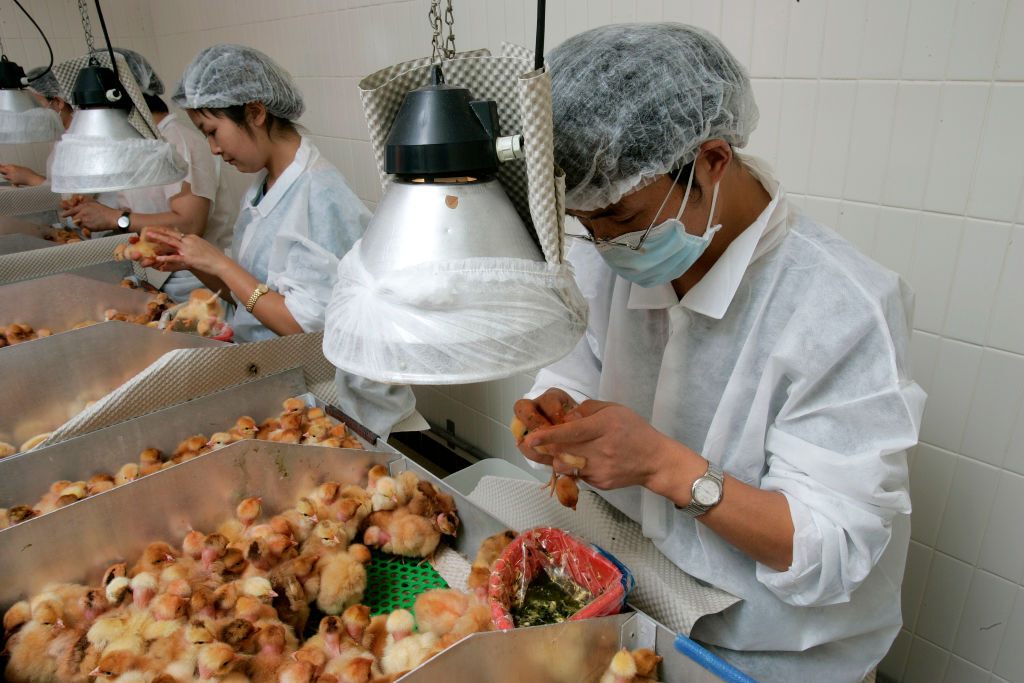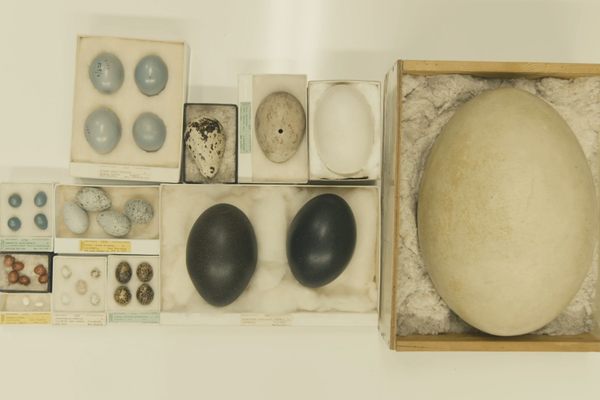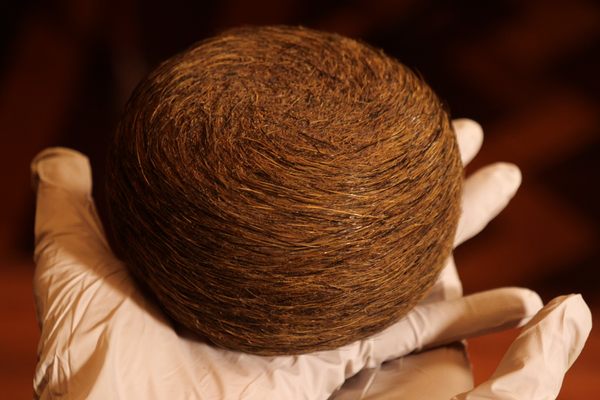Cutting-Edge Tech Could Spare America’s Unwanted Chickens From Culling
“In-ovo sexing” would revolutionize the chicken industry, but consumers have to want it first.
What’s the average lifespan of a male chicken on an industrial egg farm? Usually, it’s only one day.
Since the eggs on grocery store shelves are unfertilized, “you don’t need a rooster for the egg to be produced,” says John Brunnquell, founder and CEO of free-range egg producer Egg Innovations. As a result, Brunnquell explains, “in the United States, virtually 100 percent of all male chicks are euthanized at one day old.”
It’s a harsh reality of the American poultry industry, but also a little-known one. According to a 2023 survey, only 11 percent of American consumers were aware of “chick culling”—the killing of newly-hatched male chicks. Once informed, 73 percent felt that the industry should find an alternative solution. That solution might not be far off, thanks to new technologies that allow producers to literally count their chickens before they hatch.
The practice of chick culling originated in the 1920s and 1930s with the development of separate meat- and egg-producing chicken varieties through selective breeding. Back when chicken breeds were all-purpose, surplus roosters were simply raised for meat, but the meat chickens or “broilers” of today grow larger and faster than egg-producing “layers” of either sex.
This means that male chickens of the layer varieties, except for the small number used for breeding, “don’t have economic interest in the marketplace,” says Brunnquell. Some facilities use carbon dioxide asphyxiation or other methods to kill unwanted chicks, but in the United States, mechanized “maceration” is preferred, and actually considered by some to be relatively humane because it’s nearly instantaneous. Each year, this is the fate of around 300 million male chicks in the United States, and about seven billion worldwide.

According to Brunnquell, the fate of male layer chicks is one of the biggest animal welfare issues in the poultry industry. But things are changing rapidly. In 2018, eggs from hens whose sex had been determined in-ovo, or in the egg, became available to German consumers for the first time, thanks to a process patented by Dutch-German company Seleggt.
In-ovo sexing allows eggs with surplus male embryos to be identified early in their development and processed into fertilizer or pet food, eliminating the need to cull newly hatched male chicks. In 2021, Germany and several other European nations, such as France and Italy, became the first in the world to ban chick culling outright, and called on the rest of the European Union to do the same.
In-ovo sexing has continued to spread. “If you looked into this two years ago, the state of things would have looked a lot different,” says Robert Yaman of Innovate Animal Ag, a nonprofit that researches and tracks the technology. While bans on chick culling were a major driver of the rise of in-ovo sexing, “we’re starting to see it in countries that don’t have bans on culling,” Yaman says, such as Spain, Belgium, the Netherlands, and Norway. In 2018, eggs from in-ovo sexed hens could only be purchased at select stores in Berlin; today, they make up 15 percent of the total European egg market.
Different companies have developed their own methods of in-ovo sexing. So-called invasive methods, like the one initially patented by Seleggt, rely on chemical analysis of fluid samples, which are taken from inside the egg through a tiny hole in the shell. Non-invasive methods create a scan of the egg’s internal contents from outside, which is then analyzed by image recognition software to determine if the embryo is developing as male or female. “The technology is actually very elegant,” says Brunnquell, with accuracy rates of up to 98.5 percent.

Yaman notes that “there’s different pros and cons of each approach,” since all of these methods are relatively new. For example, there’s the question of the exact point at which a chicken embryo gains the ability to feel pain. A 2023 German study suggested that it happens on day 13 or 14 of an egg’s 21-day incubation. At the moment, sex can be determined in-ovo on day nine, and researchers are trying to push it even earlier. After sex determination, eggs with male embryos are removed from incubation, and “they’re generally going into pet food,” says Brunnquell.
When in-ovo sexing first hit the European market, American egg producers took interest immediately, but some expressed trepidation about the tech’s scalability. Could in-ovo sexing machines work fast enough to meet the punishing pace of American industry demands? As the methods are refined and perfected, with an increase of only a few cents for European consumers, it’s become increasingly clear that “it’s really not a science issue, [and] it’s not a supply chain issue” that is keeping the American chicken industry from embracing in-ovo sexing, says Brunnquell.
It’s also not due to any particular attachment to the practice of chick culling, which aside from the ethical concerns, is considered by many farmers to be an inefficient solution to the problem of surplus layer chicks. American lobbying group United Egg Producers even pledged in 2016 to end chick culling by 2020, though they have yet to do so. “At this point, it’s not economically viable,” says Brunnquell.
Brunnquell explains that there’s a key difference between the European and American egg industries. “A lot of animal welfare topics in Europe are driven by legislation,” he says, with chick-culling bans enacted at the national level. There is no similar federal push in the United States, though. “In the United States, it’s a market-driven process, so it moves slower,” says Brunnquell. Market research by Egg Innovations has found that American retailers are reluctant to move forward with in-ovo sexing, since most consumers are not demanding eggs produced without chick culling.

Brunnquell points out that some major chicken breeders with global operations practice in-ovo sexing in their European facilities, where chick culling is more widely known, but not their American ones. “The challenge in the United States is, most consumers have no awareness of this topic,” he says. Without pressure from American customers, many companies don’t see the need to change their ways.
Both Brunnquell and Yaman believe that consumer education will play a key role in getting American chicken producers on board with in-ovo sexing. “I think that as these eggs roll on to [the American] market, there probably will be a bigger conversation around this for consumers,” says Yaman. Brunnquell points out that over time, new technological advancements have helped the industry address other issues of animal welfare.
But for now, those who support the implementation of in-ovo sexing in the United States are waiting for the moment when consumers know enough about chick culling to seek out culling-free eggs, the same way they might look for products labeled as cage-free or fair trade. “It’s being monitored very, very closely,” says Brunnquell. “We’re kind of in a waiting game going, ‘Is the market ready for it yet?’”
Gastro Obscura covers the world’s most wondrous food and drink.
Sign up for our email, delivered twice a week.
































Follow us on Twitter to get the latest on the world's hidden wonders.
Like us on Facebook to get the latest on the world's hidden wonders.
Follow us on Twitter Like us on Facebook